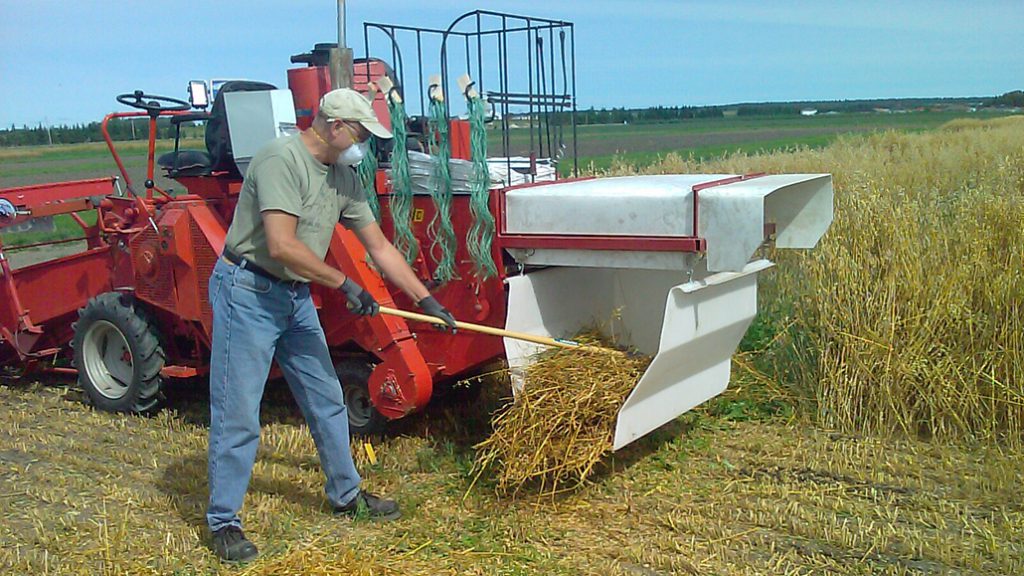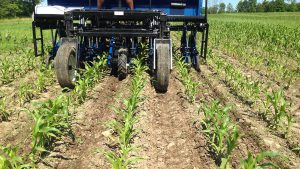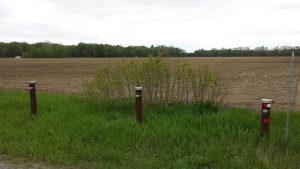Straw yield
MEASURING PROFITABILITY

THE PROFITABILITY OF straw could be the deciding factor in whether or not you keep wheat in your crop rotation. It’s one of the reasons the Ontario Cereal Crops Committee (OCCC) included a pilot project of measuring straw yield as part of their variety performance trials in 2017.
“One of the most frequently asked questions about cereal varieties is ‘what is the straw yield?,” says Peter Johnson, an agronomist with RealAgriculture.com and an OCCC committee member involved in the project. “Straw yield is a much more important component of variety selection than it previously was because if you’re looking at total income, straw has become an important component of the decision to keep or put wheat in the rotation.”
If harvested and sold, straw can be worth as much as four or five cents a pound — some farmers have added up to $200 per acre to their income. The demand for straw has increased within the livestock industry as it is now being included as part of feed rations for dairy and not just bedding; it is also in demand by mushroom farmers and could be used by biorefineries as well.
Johnson acknowledges that some farmers like to keep the straw on the field, and for them, the agronomic benefits outweigh the potential economic returns. But for those undecided about planting wheat, it’s important to note that removing the straw does not impact the agronomic benefits seen with planting wheat as the majority of organic matter comes from the roots. Previous research data has shown that wheat in the rotation leads to soybean yield increases of 11 to 12 per cent and corn yield increases of four to six per cent.
RESEARCH METHODS
The straw yield pilot project was conducted at OCCC performance trial locations in Palmerston, Winchester, and New Liskeard. The research combines used at each trial location were adapted so that a collection system and load cells could be attached at the back to weigh the straw. Sub-samples were collected to measure moisture content so that an accurate straw weight could be determined.
“Getting data from all of the repetitions of the variety plots proved to be a bit more of a challenge than we were expecting with this research,” says Ellen Sparry, general manager of C&M Seeds in Palmerston and an OCCC committee member. “Research combines are not designed to deal with some taller cereal varieties and the straw volume that needed to be processed plugged up our combine and caused delays. With rain on the way, our research agronomist had to give priority to making sure the grain yield information was collected and straw yield wasn’t obtained for all varieties.”
Plugged combines were also an issue at the other research sites, but there will still be relevant data to share with farmers. Sparry notes that the results from multiple locations gives you more faith in the data — there is wider variability with the straw data than they typically see with grain data but the trends are consistent.
This year’s performance trials also include fungicide treated versus untreated test plots. The straw yield data from those plots will add another layer of information for farmers deciding not only which variety to plant but also aid in their management decision when it comes to justifying the cost of using fungicide.
The research data was still being analyzed at press time, but straw yield results will be posted online at gocereals.ca as it becomes available. Look for this information in the varietal characteristic tables of the performance trial report.
Going forward, the inclusion of straw yield data as part of the variety performance trials will depend on the availability of funding, resolving the issues around the straw plugging the research combines, and farmer feedback on the value of the data.
This project was funded in part through Growing Forward 2 (GF2), a federal-provincial-territorial initiative. The Agricultural Adaptation Council assists in the delivery of GF2 in Ontario. •

























